Delete GarageBand to Save Precious Gigabytes of Mac Storage
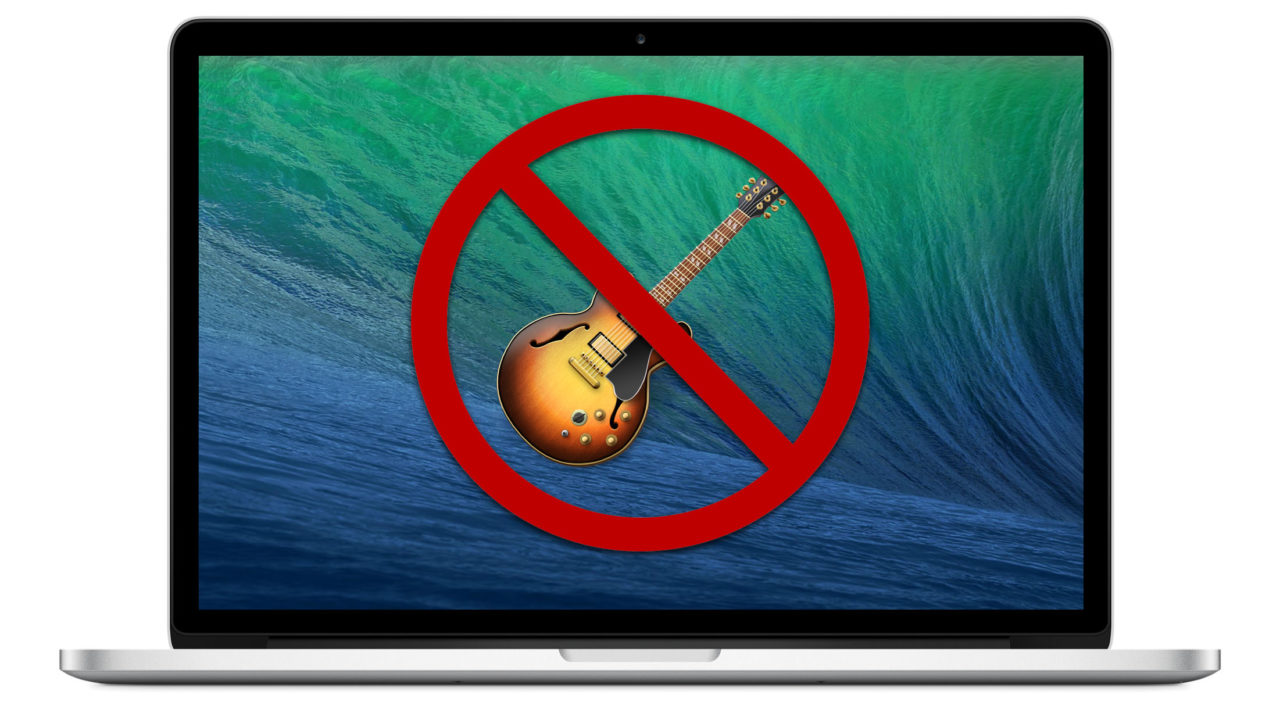
Apple’s GarageBand is a fantastic app that brings powerful audio creation and editing tools to music lovers of all levels. But it’s also a huge waste of space for users who don’t need it. Whether you’re musically challenged like us, or if you already use more advanced software like Logic Pro, Audition, or Pro Tools, here’s how you can delete GarageBand from your Mac, and save several gigabytes of storage space in the process.
Manually Delete GarageBand
As a rich media application, GarageBand installs relatively large groups of media files to several locations on your Mac’s drive. Based on a clean install of GarageBand 10.0.2 on OS X 10.9.3, key locations of large files include:
- Macintosh HD/Applications/GarageBand.app (1.16GB)
- Macintosh HD/Library/Application Support/GarageBand (995MB)
- Macintosh HD/Library/Application Support/Logic (880MB)
- Macintosh HD/Library/Audio/Apple Loops (up to 10GB)*
*Note that the size of the Apple Loops directory will vary depending on the number and type of loops downloaded by the user. You should not delete this folder (or the Logic folder) if you are using Logic Pro.
Under normal circumstances, however, users looking to delete GarageBand can expect to save around 3GB of space. It may not seem like much, especially as storage capacities continue to rise, but 3GB can make a huge difference for those with small SSDs.
To delete GarageBand, first quit all open applications and make a full system backup to be on the safe side. This can be accomplished via something like Time Machine or with the creation of a bootable clone with an app like Carbon Copy Cloner.
Once you’re all backed up, head to the locations listed above and delete them one by one, authenticating with an administrator account if asked. If you need a quick way to get to the folders in your System Library folder, open Finder and press Command-Shift-G to launch the Go to Folder window. Then just paste the folder’s location into the box and press Go.
With all files and folders moved to the Trash, right-click on the Trash icon in your Dock and choose Empty Trash. Finally, reboot to ensure that everything related to GarageBand is gone.
Delete GarageBand with a Third Party App
The above process nukes the GarageBand app and takes care of its large files, but there are still some small preference and support files that may be left behind. You can remove these manually by searching for “GarageBand” in your various system folders, or you can quickly hit them all with a third party OS X “uninstaller” app.
The two OS X uninstaller apps that we recommend are AppZapper ($13) and AppCleaner (Free). Both operate similarly: you launch the uninstaller app which gives you a blank “drop zone,” and you drag and drop the app you want to delete into the drop zone. AppZapper and AppCleaner will then scour your Mac for all of the associated support, preference, and data files that aren’t in the app’s self-contained bundle. These apps aren’t perfect, and do indeed miss things from time to time, but they’re generally a good place to start when trying to delete unwanted OS X apps.
There’s just a small bit of configuration that we must do first before we can use either app to delete GarageBand. The apps’ developers didn’t want users to inadvertently try to delete key OS X apps like Finder and Safari, so they installed safeguards to “protect” Apple applications.
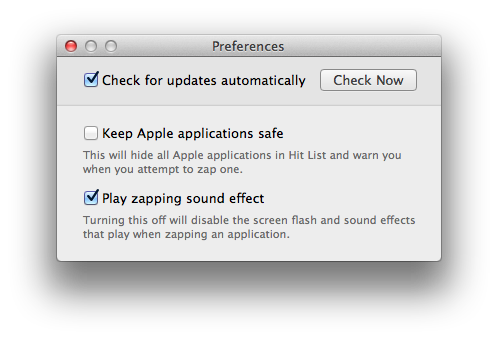
To temporarily disable this safeguard so that we can delete GarageBand, launch either app and go to its Preferences menu by clicking the app’s name in the Menu Bar and selecting Preferences. In AppZapper, uncheck the box “Keep Apple Applications Safe.” In AppCleaner, go to the General tab and uncheck the box “Protect Default Apps.”
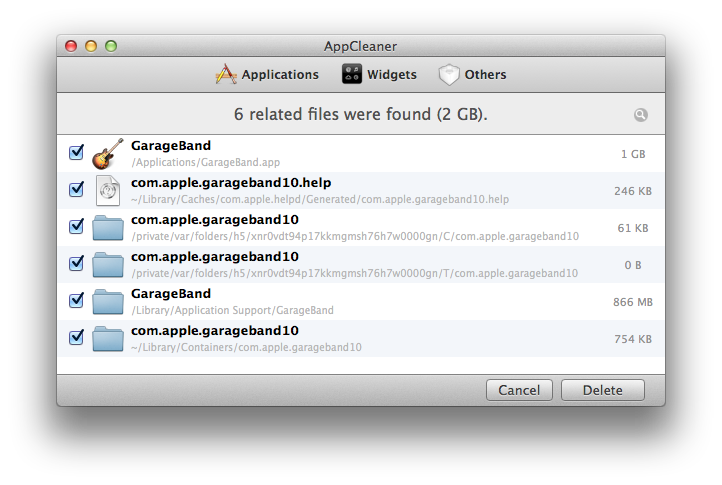
With these boxes unchecked, you’ll now be able to drag and drop the GarageBand.app file into the drop zone and see the various preference and support files that are associated with it. Browse the list to make sure nothing important was incorrectly included and then press Zap! or Delete to remove the files. Just as with the manual instructions above, a reboot following this process is a good idea.
Once you delete GarageBand and its associated files, head back to the Preferences of either app and re-check the boxes that protect the deletion of default Apple applications. While handy, both of these apps can quickly get you in trouble if you delete the wrong files, so having that extra safeguard is key.




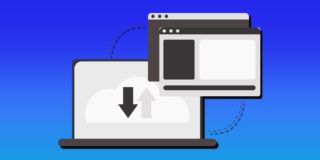
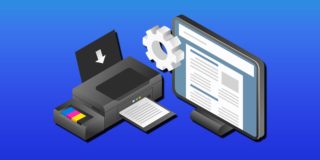
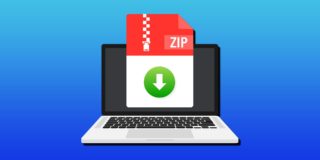
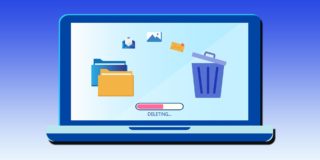
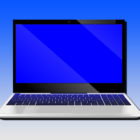
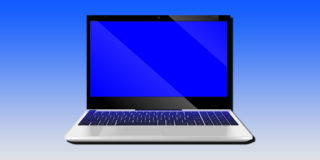

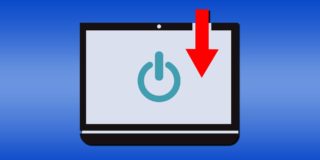

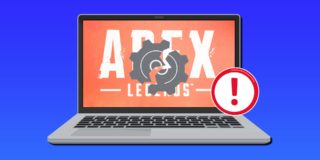


14 thoughts on “Delete GarageBand to Save Precious Gigabytes of Mac Storage”
Here is how I solved the problem (worked for 2017 MacBook Air High Sierra OS):
Go to About this Mac
Go to Storage
Go to Manage
Go to Applications
Find Garageband and click the x
Remove
For some reason this worked and I now longer have 1 Gigabyte+ in my SSD.
Best
J
I was worried about making a mess with LOGIC while deleting Garageband
Thank u
Macintosh HD/Library/Application Support/Logic/Alchemy Samples
Macintosh HD/Library/Application Support/Logic/EXS Factory Samples
Now we have another one that gives those cold stares and argues for twenty min over some potential “pitfall”.
I get things done while others worry about the 1% chance of some unforeseen problem.
So Apple comes out with an update that does not expect to see FaceTime removed. Big deal! Steve is dead. There is nobody seeking revenge on you if you remove some useless app.
I plan on running Linux in a VM on my Mac. I need the space.
Since then I removed iPhoto, the new Photos app, and mail.
I turned off spotlight search, ADWL, and handoff to free up my WiFi bandwidth.
So far no problems.
I have spoken to other people who said they took detailed notes about the locations of the files, then moved them to thumb-drive that they stash in a safe someplace.
I have installed Microsoft Office, Phtoshop, VMware, and a web editor.
The article then goes on to say that the typical user will recover about 3GB of space.
So, Newegg has a 128GB Sandisk SSD for $54. That makes each “precious” GB worth about $0.42, for a total savings of $1.26 worth of storage.
Looking at 2.5″ conventional hard drives, a TB drive is about $75 right now. That works out to $0.075 per GB or a total possible savings of $0.23.
If you’re so tight for space that 3GB matters, it’s time to upgrade the hard drive anyway. Gigabytes haven’t been “precious” in years.
No, someone else is after they buy it from you on Craigslist or ebay. At some point, you need to admit that it is time to upgrade; that your system does not have enough storage space for your needs. When you’re scrounging around to find 3GB, that’s a sign that it’s time to upgrade. Or at least to plug in an external (thumb, hard, etc.) drive to which media files, documents, and other non-OS files can be migrated.
Too many users fail to consider the OS needs for swap files, hibernation files, etc. And they don’t consider the fact that SSDs become slower and slower as the drives fill with data and the wear leveling and scatter/gather algorithms try to find space for the next write operation.
The reality is that you don’t know whether removing the files is safe or not. You don’t have a clue as to whether Apple is going to release upgrades or software that relies on those files being present.
I retired last year at age 53 from an engineering job in aerospace. I left with a seven figure (U.S. dollars, not Rubles) net worth accrued primarily through my intelligence, insight, and engineering skill. While you were prowling around comment sections, trying to argue with people far above your grade level, I was designing software to test and operate satellites and space probes. I was in clean rooms and launch sites integrating and testing spacecraft. That’s why I have a disciplined mind while yours is exactly what one would expect from some gamer kid: ‘hey, let’s just delete these files and see what happens!’
Storage may be cheap, but I don’t need to hoard apps.
I had a friend who constantly tried to get me to install one of his pared-down versions of Windows, in which he removed everything that he deemed to be unnecessary. Invariably, he would later discover that something broke. Then it was on to trying to convince me to try some other one.
I can understand the desire to minimize running background processes, but I can’t see any reason to not “hoard apps.” Just because I don’t know of a need for it now doesn’t mean that I won’t need it at some point in the future.
If by chance you needed one of the consumer level apps, you just download them from the app store. So if you “need it someday”, it’s right there for the taking.
This isn’t some hackity-hack warez Windows install, it’s literally just removing media apps you don’t use.
Right. I was contrasting the desire to remove background processes, which can buy you performance and stability, with the removal of standard apps.
You wrote: “This isn’t some hackity-hack warez Windows install,”
Whoa, there. We both had multiple licensed copies of Windows with valid keys. He was using third-party tools to strip out apps and components that he didn’t think he needed — such as Media Center, Wordpad, and Paint.
You wrote: “it’s literally just removing media apps you don’t use.”
I treat pre-installed Apple apps like I treat pre-installed Apple hardware. I may not use WiFi on my hard-wired Mac Pro, but I’m not going to remove the card and antennas — even if it saves a few milliwatts of power and cleans up the interior of my Mac Pro. I don’t care that I can always reinstall later if it’s needed.
We have different philosophies. You are betting that neither Apple nor a third party vendor will ever rely on finding a file or directory — one that is part of a base software configuration — that you removed from your system. And you are betting that, if you’re wrong, it’s not going to take you hours and hours to realize it and to find some cryptic message buried in some log file. After an engineering career that started in 1980 and ended this year (early retirement), I’ve been burned too many times to feel comfortable making that bet.
If you are worried about some sort of strange dependency, then by all means don’t delete them, but you never really know what side effects may happen in practice.
A recent Mavericks update caused my MBP to consistently hang at startup. I had to reinstall. At work.
The Yosemite upgrade borks Postgres installs via homebrew.
Does that mean I’m not going to install anymore packages or upgrade my system again? Let’s Be realistic.
It’s your system and good on you for staying so pristine, but on the subject of this article, I’ve been running OSX without iMovie, iDVD, iPhoto and GarageBand for over 5 years now, and none of those have been a source of problems.
The WiFi card is “optional” hardware — since you seem to be defining “optional” as anything you don’t envision needing, even if it is installed at the factory during manufacturing and system configuration.
Macs are not like Windows PCs, which are loaded with affiliate marketing crapware (trial antivirus, demos of games, and other such junk). That’s one thing I like about Macs. You don’t have to spend hours removing things and cleaning up before the system is useful.
You wrote: “If you are worried about some sort of strange dependency…”
You mean like Macintosh HD/Library/Application Support/Logic and Macintosh HD/Library/Audio/Apple Loops, which are part of GarageBand as well as Logic Pro?
It’s all about benefits. What’s the benefit to removing GarageBand? Let’s say it’s 3GB. I’d recover 0.032% of my internal hard drive space (9.25TB). Certainly not worth my time or incurring any risk (no matter how small).
But, as you say, it’s your system. If getting rid of the GarageBand icon were that important to me, I’d hide the file, but to each his own. Hope that you continue to have no issues due to deletion of standard apps.
The Apple Loops folder is not a part of the package (Including a 2.5gb binary file) that makes up the Garageband app. It’s a folder in which audio files reside, and if it doesn’t exist, Logic or Garageband will create it. Application Support is just a collection files external to the package and binary, like documentation, preferences or cache. You can safely delete them if you don’t need the app, and you should. Do you keep your user manual around for your BluRay player after you sell it?
I don’t understand why you are acting as though I am deleting the Finder. You realize that nearly every app you install includes a folder inside Application Support, correct? Does that mean it’s so tightly integrated into the system you can never delete an app once you install it? No way.
My system is on a 256gb SSD drive. So those apps constitute 10gb, or 4% of my drive. Very much worth deleting.
I’m not saying you are wrong to keep them, but instilling paranoia in people who want to reclaim disk space, when you clearly don’t understand how OS X is set up, is sort of uncool.
Yes, you did, by redefining “optional” as something installed by Apple that you don’t have a need for.
You wrote: “I said treating userland applications like it’s required hardware is weird. And it is.”
The WiFi card is not “required” any more than GarageBand is. You can remove the WiFi card from a Mac Pro and it boots and operates fine. So it is very much analogous.
You wrote: “Do you keep your user manual around for your BluRay player after you sell it?”
No, it goes with the BluRay player, just as GarageBand will go with the computer when I sell it.
You wrote: “The Apple Loops folder is not a part of the package (Including a 2.5gb binary file) that makes up the Garageband app. It’s a folder in which audio files reside, and if it doesn’t exist, Logic or Garageband will create it.”
And if you have Logic Pro, deleting it as part of the GarageBand uninstallation, you’re screwed. That’s one problem with deleting apps that Apple does not intend for you to delete; you have to rely on articles like this one and hope that the author didn’t miss something else.
You wrote: “My system is on a 256gb SSD drive. So those apps constitute 10gb, or 4% of my drive. Very much worth deleting.”
How did you figure 10GB? You said that you use Logic Pro, so you can only get to delete these two folders:
Macintosh HD/Applications/GarageBand.app (1.16GB)
Macintosh HD/Library/Application Support/GarageBand (995MB)
That looks a lot more like 2GB to me.
You wrote: “I’m not saying you are wrong to keep them, but instilling paranoia in people who want to reclaim disk space, when you clearly don’t understand how OS X is set up, is sort of uncool.”
My understanding of OS X and software configuration control probably dwarfs yours, as does my more than three decades of professional engineering experience, including hardware, software, and firmware. Fortunately, the people who create AppCleaner and AppZapper also have a better understanding of software configuration control than you do, so they protect Apple factory-installed applications by default. Weird, huh?
Garageband is the BluRay player in my metaphor. Its corresponding folder in Application Support is the Manual. When you delete the app, you delete the folder, because you no longer need the support for that application.
Your reasons for being afraid of deleting the apps are hypothetical, mine are empirical in the fact that I been doing it in OS X for 6 years and 5 OS iterations. Those apps (meaning the deleted ones, not just Garageband) add up to about 10 gigs of reclaimed space, which makes it worth it in my specific case.
TL; DR and for the people in this thread who are actually wondering:
The FACT is, you CAN safely delete iPhoto, iMovie, iDVD and Garageband (same with iLife if you got it preinstalled). Changing your system in any way can have implications, but these ones are not the chicken little situation that this gentleman is claiming.
Nothing I have stated is false or “paranoid.” It’s the result of me having more than three decades of experience in industries (instrumentation and aerospace) where I would not have lasted a month with your cavalier attitude.
You wrote: “Going by the extreme reservation you have, I’m surprised you make any changes to your system ever.”
That’s because you still fail to understand that pre-installed hardware and software is conceptually different than hardware and software installed post-purchase. I know, for a fact, that Apple will never assume my system has a copy of Chrome, Photoshop, Logic Pro, or a Kensington TrackBall. Therefore, it will never break any Apple update or app if I remove those things. But they might assume that it has the things they shipped it with, including the Airport Utility, Photo Booth, Textedit, the WiFi card, and possibly even Garage Band.
As to making changes to my system, I’m not the one who won’t upgrade my hard drive. On my Mac Pro, I’ve added a 1TB SSD on a Velocity Solo x2 SATA III controller. I’ve got a 240GB PNY SSD. And I’ve got two Hitachi 4TB drives (Ultrastar enterprise drive and Deskstar as a backup drive). I’ve added a USB 3.0 card and an internal BluRay drive. I’ve got more aftermarket applications than you could even fit onto your drive.
You wrote: “Your reasons for being afraid of deleting the apps are hypothetical, mine are empirical in the fact that I been doing it in OS X for 6 years and 5 OS iterations.”
That’s like driving around with no seat belts for 6 years and then declaring that doing so is perfectly safe and that everyone who wears them is afraid and paranoid. It’s not a matter of “fear” at all. But I’m not going to incur any risk at all to do something basically pointless. If 10GB becomes a big deal to me, then it’s time to upgrade, not start stripping out apps.
Do you have a letter from Apple stating that they approve of the deletion, the files being deleted, and that they commit to not release future updates or applications which rely on the presence of that pre-installed software? No, you don’t. But that’s just the kind of letter that would be required by many firms prior to such a deletion. So you’re just deleting files and hoping that Apple does not, at some future date, rely on any of those files being present. But I acknowledge that you’ll probably continue to get away with it, just like many people get away with not wearing seat belts.
You wrote: “Those apps (meaning the deleted ones, not just Garageband) add up to about 10 gigs of reclaimed space, which makes it worth it in my specific case.”
Then don’t try to project your “specific case” on others. It might be worth it in “my specific case” to drink unfiltered water from a stream to survive, but it’s not something that I’d recommend as perfectly safe to someone who does not have a similarly dire need.